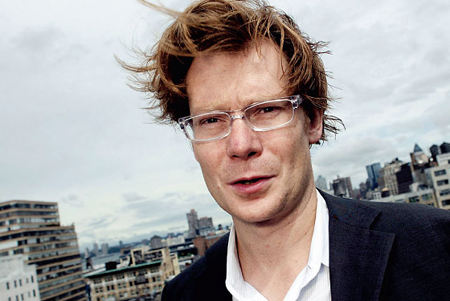
Beacon of Hope
Does Philippe Vergne have what it takes to keep Dia from being DOA?
By Jerry Saltz
Published Jul 6, 2008
Finally, some good news from the vexed Dia Art Foundation: It’s hired Philippe Vergne as its next director. Vergne, 42, has been curator for over ten years at the Walker Art Center in Minneapolis and is currently deputy director there. A champion of art and artists, he sees everything, has a keen mind, a good eye, writes well, and has curated excellent shows. Vergne isn’t just some out-of-towner lucky to make it in the big time; he’s been on the hiring radar at both P.S. 1 and MoMA, too. Taking the Dia job is a real risk for his career.
But he has a sense of humor about it. When I saw Vergne at an opening the night his appointment was announced, I congratulated him and said I hoped he was prepared to do a lot of fund-raising, and he stuck his hand into my jacket as if to swipe my wallet. Vergne helped raise money for the Walker. At Dia, he’s going to have to raise millions of dollars and tame pigheaded trustees. The dilemma Dia is in will be as hard to get out of as it was seemingly simple and stupid to get into. It can be boiled down to the yearning of the board of trustees—led at the time by Leonard Riggio, director Michael Govan, and curator Lynne Cooke—to open a huge space outside New York to exhibit Dia’s magnificent permanent collection. In 2003, they opened their dream palace in Beacon. Whether the beautifully renovated 292,000-square-foot former Nabisco factory is a monument or a mausoleum for Minimalism, those who created it deserve credit. What’s unforgivable is that eight months after opening this massive edifice, Dia closed its West 22nd Street home, for good. Rather than remedying the situation, Riggio left. Govan moved on and is now director of the Los Angeles County Museum of Art. Cooke is still at Dia but was recently named a curator at the Reina Sofía in Madrid.
It would be easy to wish a pox on Dia’s house. But this institution has always held a special place in the art world’s heart. It was the first exhibition site in Chelsea, its spaces a combination of warehouse, museum, and Zen retreat—a place to marinate in art.
Dia also oversees earthworks like Walter De Maria’s Lightning Field and Robert Smithson’s Spiral Jetty. But without a permanent exhibition space in Manhattan, Dia is a ghost of its former self. Vergne has the vision and skill to put Dia back together again. It doesn’t matter what neighborhood it’s in, or even what borough, so long as it’s large and versatile. If Vergne can’t get this to happen within four or five years, however, it’ll probably never happen at all.
 Beacon of Hope
Beacon of Hope